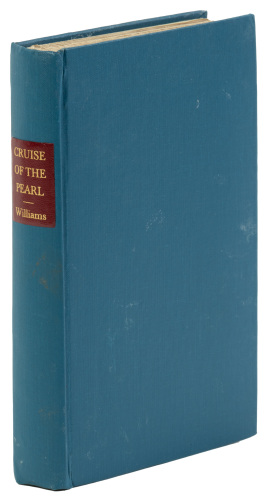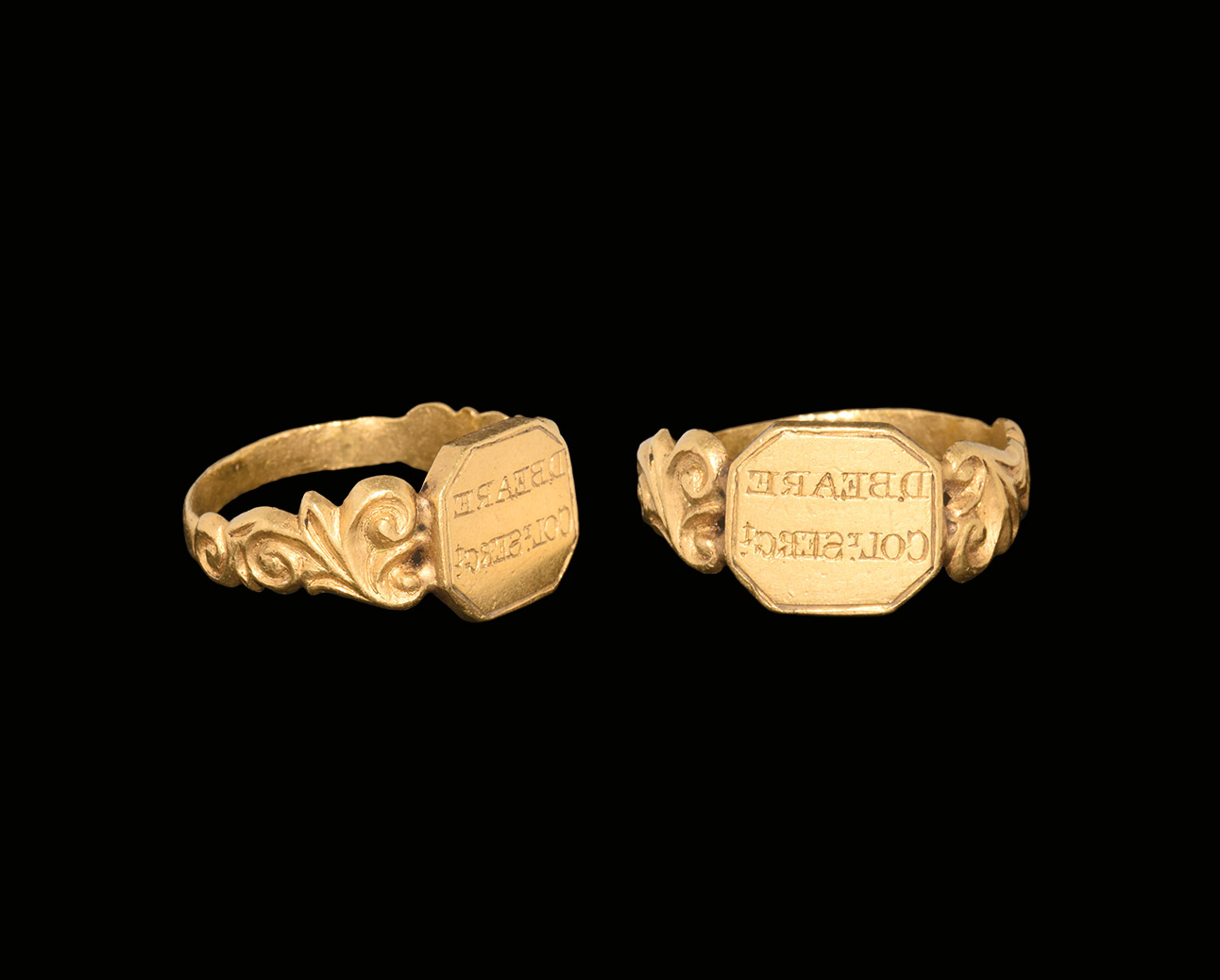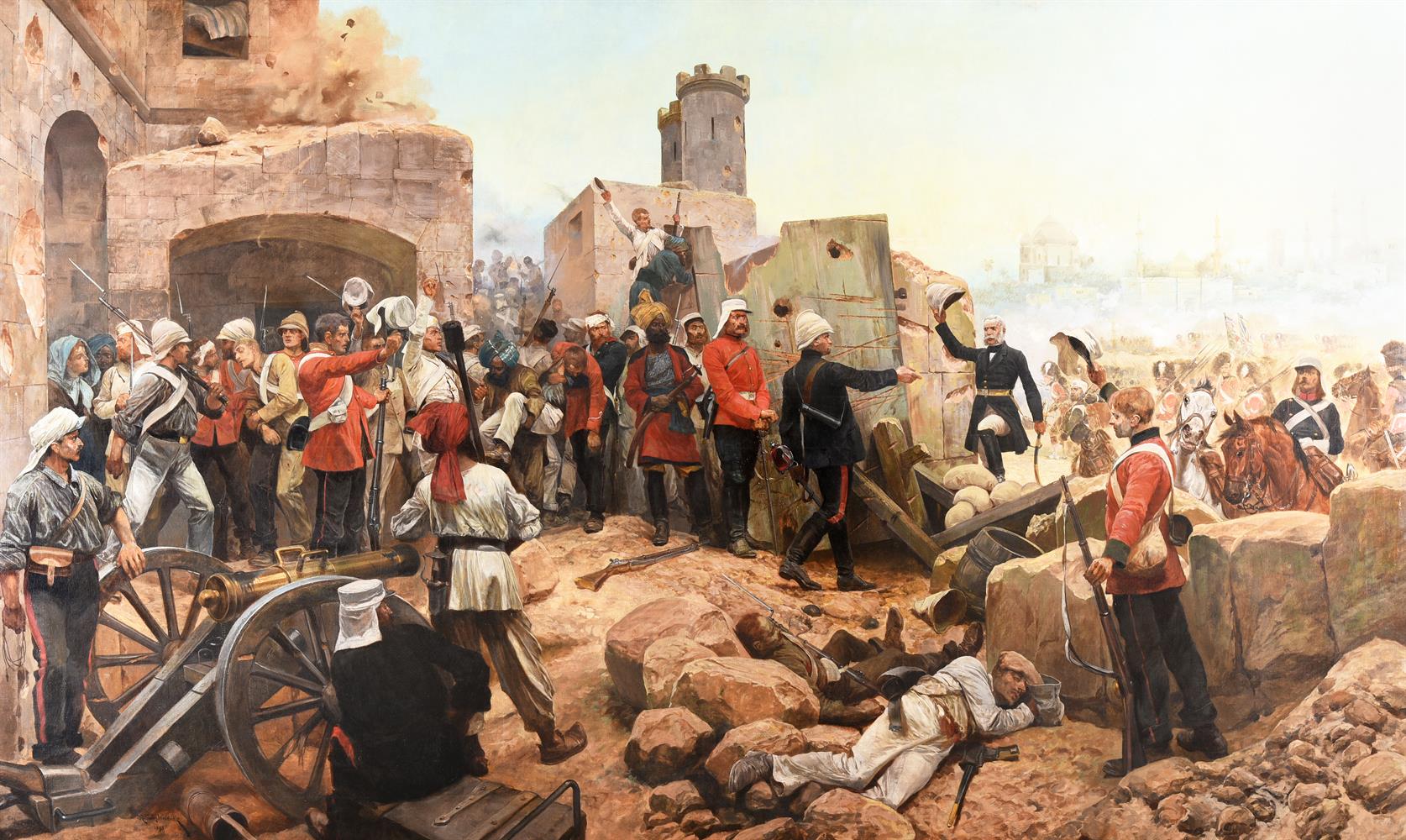INDIAN REBELLION OF 1857] – The archive of HENRY CARRE TUCKER (1812-1875). Comprising correspondence received from Sir Cecil Beadon, 17 May [1857] – 28 January [1858] (28 letters), Sir John Peter Grant, 29 August [1857] – 5 February [1858] (112 letters), and further correspondents, mostly Indian administrators, including VISCOUNT CANNING (two letters, 1857-1858, 16 pages in total) and related ephemera (c.35 items in total); [ With: ] correspondence received by his father, Henry St. George Tucker (1771-1851, Chairman of the East India Company), 1835-41, from the DUKE OF WELLINGTON (6 letters) and Lord Charles Metcalfe (1 letter); [ And: ] a quantity of the papers of his nephew, Louis Henry Emile Tucker (1843-1925; 18 items, 1878-1901). Approx. 200 items in total. Provenance : by descent. The archive of the Indian colonial administrator, Henry Carre Tucker, which brings to life in vivid detail the tumult and bloodshed of the Indian Rebellion of 1857. The correspondence from Cecil Beadon opens just one week after the first sepoy mutiny at Meerut on 10 May 1857 – ‘You will have heard by the time this reaches you of the frightful mutiny at Meerut and Delhi, and of the massacre of Europeans at one of those places […] The notion prevalent in the Sepoy mind that the Govt are bent on destroying caste exists in Benares and wherever there is a native Regiment’ – and continues at regular intervals, charting the development of the crisis from the viewpoint of the British administration. Beadon passes on reports and rumours alike, of mushrooming mutinies and plots, military victories and losses, and the rolling preoccupations of the British Government – that the sepoys have left Delhi and are marching for Cawnpore, that the Indian divisions currently loyal to the British will revolt, that Delhi continues to be held by the ‘insurgents’, the panic amongst the resident European population, and the evacuation of the community at Benares by bullock train – while asking for reports from Tucker in return. In one striking missive, Beadon urges Tucker to ‘take care that the innocent do not suffer with the guilty more than can possibly be helped: and that the villagers are not driven to despair and exasperation by indiscriminate burning and execution’, while in another he sends his condolences on the death of Tucker’s brother [Robert Tudor Tucker] (‘I fear that several of my own relatives have been mostly murdered in Oude’). John Peter Grant’s letters to Tucker track the progress of the Mutiny from August 1857 to February 1858 in even greater detail, his letters often arriving daily: again, they report on the movement of troops, most notably the Gurkha divisions, and supplies, the treatment of mutineers and rebels (‘If it was right the other day to cut off 68 heads in cold blood it can hardly be right now to pardon everyone with a head on’) as well as civilians and refugees, military strategy – from the gathering of intelligence to the formation of defensive outposts – and a multiplicity of legal and administrative matters, chiefly relating to Gorakhpur, Azamgarh, Ghazipur, and Benares. Henry Carre Tucker served as Commissioner and Agent to the Governor-General of Benares [Varanasi] between 1853-1858; as such, he found himself playing a central role during the Indian Mutiny of 1857-8, most notably for the responsibility he held for the evacuation from Benares to Chunar Fort, and the dispatch of reinforcements for Cawnpore and Lucknow (the massacre that took place at the former spurring the frantic defence of the latter: both are mentioned in the correspondence). The letters he received from two representatives of Bengali Civil Service, Sir Cecil Beadon (1816–1880) and Sir John Peter Grant (1807-1893) form the core of the present archive: together, they offer an insight into the decisions made by the upper echelons of the British colonial administration during a conflict that would claim over 800,000 lives, and was characterised by the atrocities
INDIAN REBELLION OF 1857] – The archive of HENRY CARRE TUCKER (1812-1875). Comprising correspondence received from Sir Cecil Beadon, 17 May [1857] – 28 January [1858] (28 letters), Sir John Peter Grant, 29 August [1857] – 5 February [1858] (112 letters), and further correspondents, mostly Indian administrators, including VISCOUNT CANNING (two letters, 1857-1858, 16 pages in total) and related ephemera (c.35 items in total); [ With: ] correspondence received by his father, Henry St. George Tucker (1771-1851, Chairman of the East India Company), 1835-41, from the DUKE OF WELLINGTON (6 letters) and Lord Charles Metcalfe (1 letter); [ And: ] a quantity of the papers of his nephew, Louis Henry Emile Tucker (1843-1925; 18 items, 1878-1901). Approx. 200 items in total. Provenance : by descent. The archive of the Indian colonial administrator, Henry Carre Tucker, which brings to life in vivid detail the tumult and bloodshed of the Indian Rebellion of 1857. The correspondence from Cecil Beadon opens just one week after the first sepoy mutiny at Meerut on 10 May 1857 – ‘You will have heard by the time this reaches you of the frightful mutiny at Meerut and Delhi, and of the massacre of Europeans at one of those places […] The notion prevalent in the Sepoy mind that the Govt are bent on destroying caste exists in Benares and wherever there is a native Regiment’ – and continues at regular intervals, charting the development of the crisis from the viewpoint of the British administration. Beadon passes on reports and rumours alike, of mushrooming mutinies and plots, military victories and losses, and the rolling preoccupations of the British Government – that the sepoys have left Delhi and are marching for Cawnpore, that the Indian divisions currently loyal to the British will revolt, that Delhi continues to be held by the ‘insurgents’, the panic amongst the resident European population, and the evacuation of the community at Benares by bullock train – while asking for reports from Tucker in return. In one striking missive, Beadon urges Tucker to ‘take care that the innocent do not suffer with the guilty more than can possibly be helped: and that the villagers are not driven to despair and exasperation by indiscriminate burning and execution’, while in another he sends his condolences on the death of Tucker’s brother [Robert Tudor Tucker] (‘I fear that several of my own relatives have been mostly murdered in Oude’). John Peter Grant’s letters to Tucker track the progress of the Mutiny from August 1857 to February 1858 in even greater detail, his letters often arriving daily: again, they report on the movement of troops, most notably the Gurkha divisions, and supplies, the treatment of mutineers and rebels (‘If it was right the other day to cut off 68 heads in cold blood it can hardly be right now to pardon everyone with a head on’) as well as civilians and refugees, military strategy – from the gathering of intelligence to the formation of defensive outposts – and a multiplicity of legal and administrative matters, chiefly relating to Gorakhpur, Azamgarh, Ghazipur, and Benares. Henry Carre Tucker served as Commissioner and Agent to the Governor-General of Benares [Varanasi] between 1853-1858; as such, he found himself playing a central role during the Indian Mutiny of 1857-8, most notably for the responsibility he held for the evacuation from Benares to Chunar Fort, and the dispatch of reinforcements for Cawnpore and Lucknow (the massacre that took place at the former spurring the frantic defence of the latter: both are mentioned in the correspondence). The letters he received from two representatives of Bengali Civil Service, Sir Cecil Beadon (1816–1880) and Sir John Peter Grant (1807-1893) form the core of the present archive: together, they offer an insight into the decisions made by the upper echelons of the British colonial administration during a conflict that would claim over 800,000 lives, and was characterised by the atrocities















Try LotSearch and its premium features for 7 days - without any costs!
Be notified automatically about new items in upcoming auctions.
Create an alert